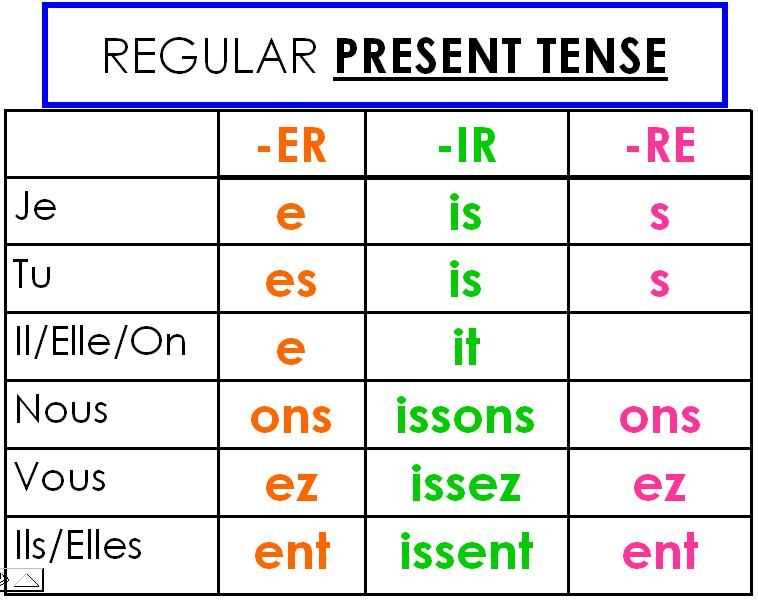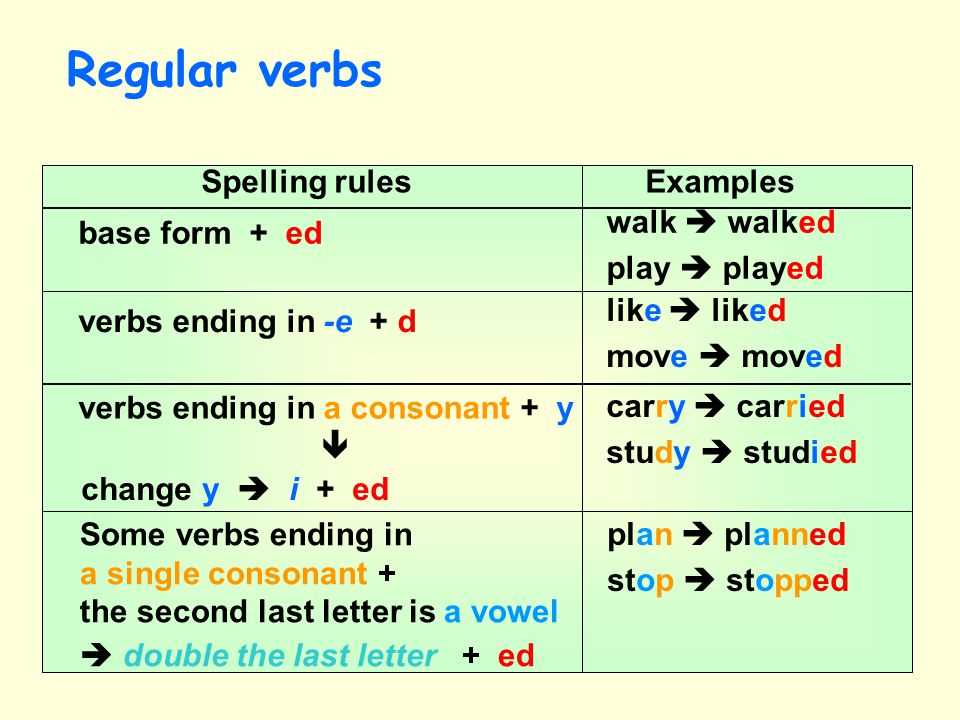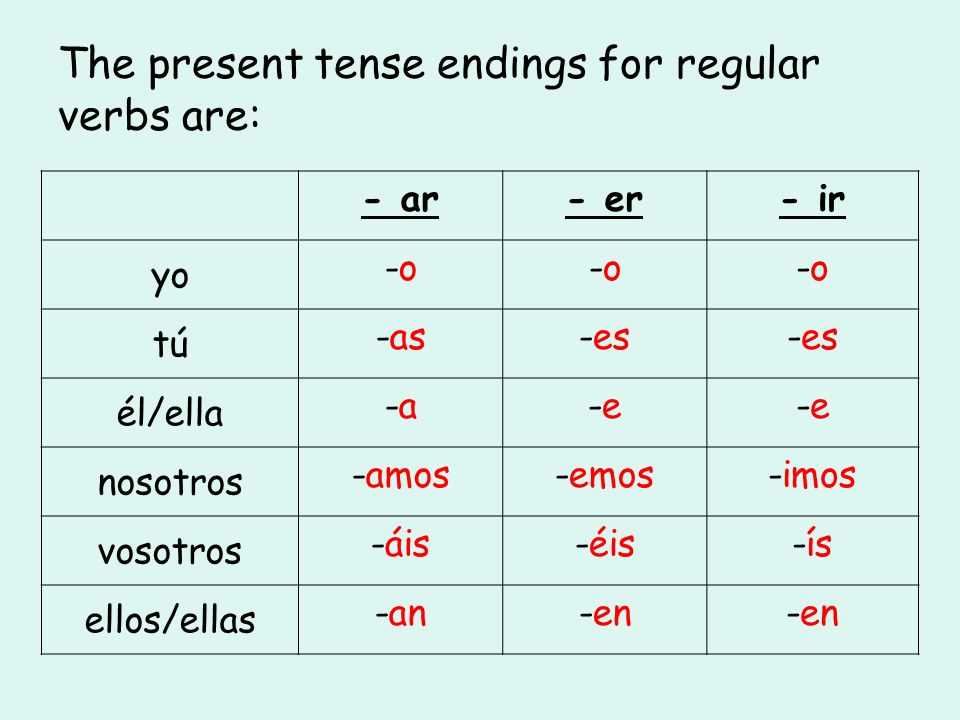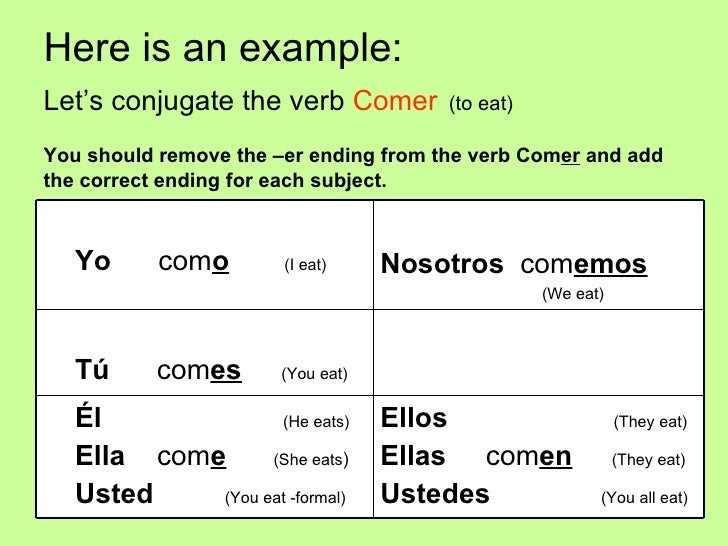
Understanding the present tense of -er and -ir verbs is essential for effectively communicating in Spanish. By grasping these verb conjugations, you will be able to describe ongoing actions, habitual actions, general truths, and much more.
When conjugating -er verbs, such as comer (to eat) or beber (to drink), the endings vary depending on the subject pronoun. For example, “I eat” is translated as “como,” “you eat” as “comes,” and “he/she/it eats” as “come.” Similarly, the conjugations for -ir verbs, such as vivir (to live) or escribir (to write), follow a similar pattern.
Learning these verb conjugations can be made fun and interactive. Practice exercises and quizzes are available to reinforce your understanding of the present tense of -er and -ir verbs. By honing your skills, you will gain confidence in speaking and writing Spanish, allowing you to express yourself more fluently in a variety of situations.
The present tense of ER and IR verbs in Spanish is used to talk about actions that are happening currently or regularly. These verbs follow a similar pattern of conjugation, but with slight differences depending on whether they end in -er or -ir.
To conjugate regular ER verbs in the present tense, you need to drop the -er ending and add the appropriate endings based on the subject pronoun. For example, the verb “comer” (to eat) would be conjugated as follows:
- yo como (I eat)
- tú comes (you eat)
- él/ella/usted come (he/she/you formal eats)
- nosotros/nosotras comemos (we eat)
- vosotros/vosotras coméis (you all eat)
- ellos/ellas/ustedes comen (they/you all formal eat)
Similarly, regular IR verbs are conjugated by dropping the -ir ending and adding the appropriate endings. For example, the verb “vivir” (to live) would be conjugated as follows:
- yo vivo (I live)
- tú vives (you live)
- él/ella/usted vive (he/she/you formal lives)
- nosotros/nosotras vivimos (we live)
- vosotros/vosotras vivís (you all live)
- ellos/ellas/ustedes viven (they/you all formal live)
It’s important to note that there are some irregular ER and IR verbs that do not follow the regular conjugation patterns. These verbs will have different stem changes or completely irregular conjugations. However, most ER and IR verbs in the present tense will follow the regular pattern of conjugation.
In conclusion, the present tense of ER and IR verbs in Spanish is used to talk about actions happening in the present. The regular conjugation pattern involves dropping the -er or -ir ending and adding the appropriate endings based on the subject pronoun. However, there are also irregular verbs that do not follow this pattern.
Understanding the Present Tense Form of ER and IR Verbs

In Spanish, verbs are classified into three groups: AR, ER, and IR. Each group has its own set of conjugation patterns in different tenses. In this text, we will focus on the present tense form of ER and IR verbs.
ER verbs are a group of verbs that have the infinitive form ending in -er. Some common ER verbs include comer (to eat), beber (to drink), and creer (to believe). To conjugate ER verbs in the present tense, you need to remove the -er ending and add the appropriate endings to the stem. For example:
- Yo como (I eat)
- Tú comes (You eat)
- Él/ella/usted come (He/she/you eat)
- Nosotros/as comemos (We eat)
- Ellos/ellas/ustedes comen (They/you all eat)
On the other hand, IR verbs are a group of verbs that have the infinitive form ending in -ir. Some common IR verbs include vivir (to live), abrir (to open), and escribir (to write). To conjugate IR verbs in the present tense, the process is similar to ER verbs. You remove the -ir ending and add the appropriate endings to the stem. For example:
- Yo vivo (I live)
- Tú vives (You live)
- Él/ella/usted vive (He/she/you live)
- Nosotros/as vivimos (We live)
- Ellos/ellas/ustedes viven (They/you all live)
It’s important to remember that the endings change depending on the subject pronoun. Pay attention to the spelling and pronunciation of each conjugation. With practice, you will become more familiar with the patterns and be able to conjugate ER and IR verbs effortlessly in the present tense.
Regular ER and IR Verbs in Present Tense

The present tense is used to talk about actions that are happening now or that happen regularly. In Spanish, regular ER and IR verbs follow a similar pattern in the present tense.To conjugate regular ER verbs in the present tense, drop the ER ending and add the following endings to the stem: -o, -es, -e, -emos, -éis, -en. For example, the verb “comer” (to eat) is conjugated as follows: como, comes, come, comemos, coméis, comen.Similarly, regular IR verbs are conjugated by dropping the IR ending and adding the following endings to the stem: -o, -es, -e, -imos, -ís, -en. For example, the verb “vivir” (to live) is conjugated as follows: vivo, vives, vive, vivimos, vivís, viven.It’s important to note that there are several patterns of regular ER and IR verbs in the present tense, so it’s necessary to practice and memorize the conjugations of different verbs. However, once you understand the patterns, conjugating regular ER and IR verbs becomes easier.Here’s a list of some common regular ER and IR verbs and their conjugations in the present tense:
| Verb | Conjugation |
|---|---|
| comer (to eat) | como, comes, come, comemos, coméis, comen |
| beber (to drink) | bebo, bebes, bebe, bebemos, bebéis, beben |
| vivir (to live) | vivo, vives, vive, vivimos, vivís, viven |
| escribir (to write) | escribo, escribes, escribe, escribimos, escribís, escriben |
By practicing the conjugations of regular ER and IR verbs, you’ll become more comfortable with these verb forms and be able to express yourself more fluently in Spanish!
Conjugation of Regular ER Verbs in Present Tense
Conjugating regular ER verbs in the present tense is an essential part of learning Spanish grammar. These verbs are called regular because they follow a predictable pattern when conjugated, making it easier to memorize and use them in conversation. Understanding the conjugations of regular ER verbs is crucial for forming sentences and expressing actions that are happening at the present moment.
In Spanish, regular ER verbs end in -er and belong to the second conjugation group. To conjugate these verbs in the present tense, you need to remove the -er ending and add the appropriate endings based on the subject pronoun. The endings for regular ER verbs are: -o, -es, -e, -emos, -éis, -en.
| Subject Pronoun | Conjugation |
|---|---|
| yo | -o |
| tú | -es |
| él/ella/usted | -e |
| nosotros/nosotras | -emos |
| vosotros/vosotras | -éis |
| ellos/ellas/ustedes | -en |
For example, let’s take the regular ER verb “comer” (to eat). When conjugated in the present tense, it becomes:
- Yo como (I eat)
- Tú comes (You eat)
- Él/Ella/Usted come (He/She/You formal eat)
- Nosotros/Nosotras comemos (We eat)
- Vosotros/Vosotras coméis (You all eat)
- Ellos/Ellas/Ustedes comen (They/You all eat)
By understanding and practicing the conjugation of regular ER verbs in the present tense, you will be able to communicate more effectively in Spanish and express actions happening in the present moment. It is essential to familiarize yourself with the conjugations and practice using them in various sentences to improve your language skills.
Conjugation of Regular IR Verbs in Present Tense
In Spanish, regular IR verbs are a type of verb that ends in -ir in their infinitive form. These verbs follow a specific pattern of conjugation in the present tense.
When conjugating regular IR verbs in the present tense, the verb endings change depending on the subject pronoun. Here is the conjugation pattern:
- Yo (I) – add -o to the verb stem. For example, the verb “vivir” (to live) becomes “vivo” in the present tense.
- Tú (you) – add -es to the verb stem. For example, “vivir” becomes “vives” when conjugated for tú.
- Él/Ella/Usted (he/she/you formal) – add -e to the verb stem. For example, “vivir” becomes “vive” when conjugated for él/ella/usted.
- Nosotros/Nosotras (we) – add -imos to the verb stem. For example, “vivir” becomes “vivimos” when conjugated for nosotros/nosotras.
- Vosotros/Vosotras (you all) – add -ís to the verb stem. For example, “vivir” becomes “vivís” when conjugated for vosotros/vosotras.
- Ellos/Ellas/Ustedes (they/you all) – add -en to the verb stem. For example, “vivir” becomes “viven” when conjugated for ellos/ellas/ustedes.
Here are some examples of regular IR verbs conjugated in the present tense:
| Verb | Yo | Tú | Él/Ella/Usted | Nosotros/Nosotras | Vosotros/Vosotras | Ellos/Ellas/Ustedes |
|---|---|---|---|---|---|---|
| vivir (to live) | vivo | vives | vive | vivimos | vivís | viven |
| compartir (to share) | comparto | compartes | comparte | compartimos | compartís | comparten |
| escribir (to write) | escribo | escribes | escribe | escribimos | escribís | escriben |
It’s important to note that there are some irregular IR verbs in Spanish, which do not follow this conjugation pattern. However, the majority of IR verbs are regular and can be easily conjugated using this pattern.
By understanding the conjugation pattern of regular IR verbs in the present tense, you will be able to confidently communicate in Spanish and form sentences using these verbs accurately.
Stem-changing ER and IR Verbs in Present Tense

In Spanish, there are certain verbs that undergo stem changes in the present tense. These stem changes occur in the stem of the verb, which is the part of the verb that remains constant throughout different conjugations. Stem-changing verbs have a pattern in which the vowel in the stem changes when conjugated in certain pronouns.
The stem changes occur in the verbs that end in -er and -ir in their infinitive form. The most common types of stem-changing ER and IR verbs are those that have a vowel change from e to ie or o to ue. For example, the verb “querer,” which means “to want,” has a stem change from e to ie in the present tense. So, when conjugated, “quiero” means “I want,” and “quieres” means “you want.”
Here is a table showing the different forms of the verb “querer” in the present tense:
| Subject Pronoun | Present Tense |
|---|---|
| Yo | quiero |
| Tú | quieres |
| Él/Ella/Usted | quiere |
| Nosotros/Nosotras | queremos |
| Vosotros/Vosotras | queréis |
| Ellos/Ellas/Ustedes | quieren |
Another example of a stem-changing ER verb is “pensar,” which means “to think.” In the present tense, the stem changes from e to ie. So, when conjugated, “pienso” means “I think,” and “piensas” means “you think.”
Similarly, there are stem-changing IR verbs, such as “dormir,” which means “to sleep.” In the present tense, the stem changes from o to ue. So, when conjugated, “duermo” means “I sleep,” and “duermes” means “you sleep.”
It is important to be aware of these stem-changing verbs in the present tense as they may not follow the regular conjugation patterns. Practice is key in mastering the conjugation of these verbs, and with time and practice, you’ll become more comfortable with using them in different contexts.
Explanation of Stem-changing Verbs
In Spanish, there are certain verbs that undergo stem changes in the present tense. Stem-changing verbs, also known as boot verbs, have a unique pattern of conjugation where the stem of the verb changes in some forms. These stem changes occur in the boot-shaped portion of the verb, which includes the present tense singular forms and the third person plural form.
There are three types of stem changes: e – ie, o – ue, and e – i. The most common stem-change is e – ie, where the e in the stem of the verb changes to ie in the boot forms. For example, the verb pensar (to think) becomes pienso (I think) and piensan (they think). Another common stem-change is o – ue, where the o in the stem changes to ue in the boot forms. For example, the verb poder (to be able to) becomes puedo (I can) and pueden (they can).
Lastly, there is the stem-change e – i, which is less common but still important to know. In this type of stem-change, the e in the stem changes to i in the boot forms. For example, the verb pedir (to ask for) becomes pido (I ask for) and piden (they ask for).
It is important to note that not all verbs undergo stem changes. Only certain verbs that have specific patterns in their conjugations will experience stem changes. It is crucial to memorize these irregular patterns and practice conjugating the verbs correctly to become fluent in Spanish.
Conjugation of Stem-changing ER Verbs in Present Tense
In Spanish, regular verbs ending in ER can undergo stem changes in the present tense. This means that the stem of the verb changes in certain forms of the conjugation. Stem-changing ER verbs follow a specific pattern, where the vowel in the stem changes from ‘e’ to ‘ie’ or from ‘o’ to ‘ue’ in certain forms.
Let’s take the verb “pensar” (to think) as an example. In the present tense, the stem (‘pens-‘) changes to ‘piens-‘ in the first and second person singular forms, as well as in the third person singular form. Therefore, the conjugation of “pensar” in the present tense would be:
- Yo pienso (I think)
- Tú piensas (You think)
- Él/Ella/Usted piensa (He/She thinks)
- Nosotros/Nosotras pensamos (We think)
- Vosotros/Vosotras pensáis (You all think)
- Ellos/Ellas/Ustedes piensan (They think)
Another example of a stem-changing ER verb is “entender” (to understand). In this case, the stem (‘entend-‘) changes to ‘entiend-‘ in the first and second person singular forms, as well as in the third person singular form. The conjugation of “entender” in the present tense would be:
- Yo entiendo (I understand)
- Tú entiendes (You understand)
- Él/Ella/Usted entiende (He/She understands)
- Nosotros/Nosotras entendemos (We understand)
- Vosotros/Vosotras entendéis (You all understand)
- Ellos/Ellas/Ustedes entienden (They understand)
It’s important to note that not all ER verbs undergo stem changes in the present tense. Regular ER verbs that do not have any stem changes follow the standard conjugation pattern. However, it’s important to recognize and practice conjugating stem-changing ER verbs to expand your vocabulary and fluency in Spanish.